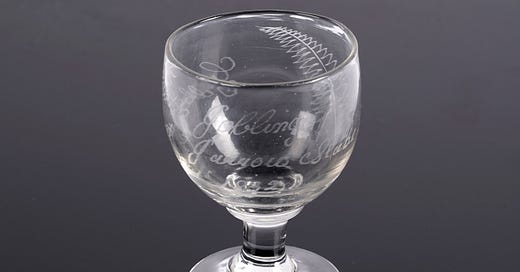Auction revives story of Jarrow’s gibbeted pitman
Glass reflects macabre execution. Tony Henderson reports.
An infamous execution of a North East pitman has been recalled in an auction sale.
William Jobling was the last man in the north of England to be hung and gibbeted his body covered in tar and enclosed in an iron cage suspended from a wooden derrick on Jarrow Slake.
The episode took place during a bitter miners’ strike in 1832 and by 1843 gibbeting had been abolished.
Now a 19th century ale glass commemorating the death of Jobling, inscribed 'William Jobling, Gibbeted at Jarrow Slake, Aug 3rd 1832', has been sold by Newcastle auctioneers Anderson & Garland for £520, including fees.
Jobling was born in Jarrow in 1794. In 1832 he was accompanied by Ralph Armstrong, when they came across 71-year-old local magistrate Nicholas Fairles, on horseback near Jarrow Slake.
The men asked for money and when Fairles refused, he was attacked and 10 days later died from his injuries.
Before he died at home, Fairles identified Jobling as being on the scene but said that it was Armstrong who was his main attacker. Armstrong escaped and was never found.
Jobling was found guilty of murder at Durham Assizes. He was publicly executed, his body was covered with tar and placed in the gibbet which was erected in public view on the Slake, a basin of mud and water on the Tyne at Jarrow.
Weeks later Jobling’s body disappeared and is believed to have been taken by his family and buried. In 2013 a sandstone memorial was placed near the Tyne pedestrian tunnel entrance in Jarrow and carries an inscription to Jobling.
Although a murder had taken place, the case has long caused controversy, with claims that the manner of the execution was a means of breaking the strike.
The gibbet was given to the Society of Antiquaries of Newcastle upon Tyne in 1856 and was kept in Newcastle Keep,
It featured in an exhibition on Jobling at the Bede Art Gallery in Jarrow in 1972 and later toured nationally.
A section of the derrick and gibbet is now part of the collections at South Shields Museum.





